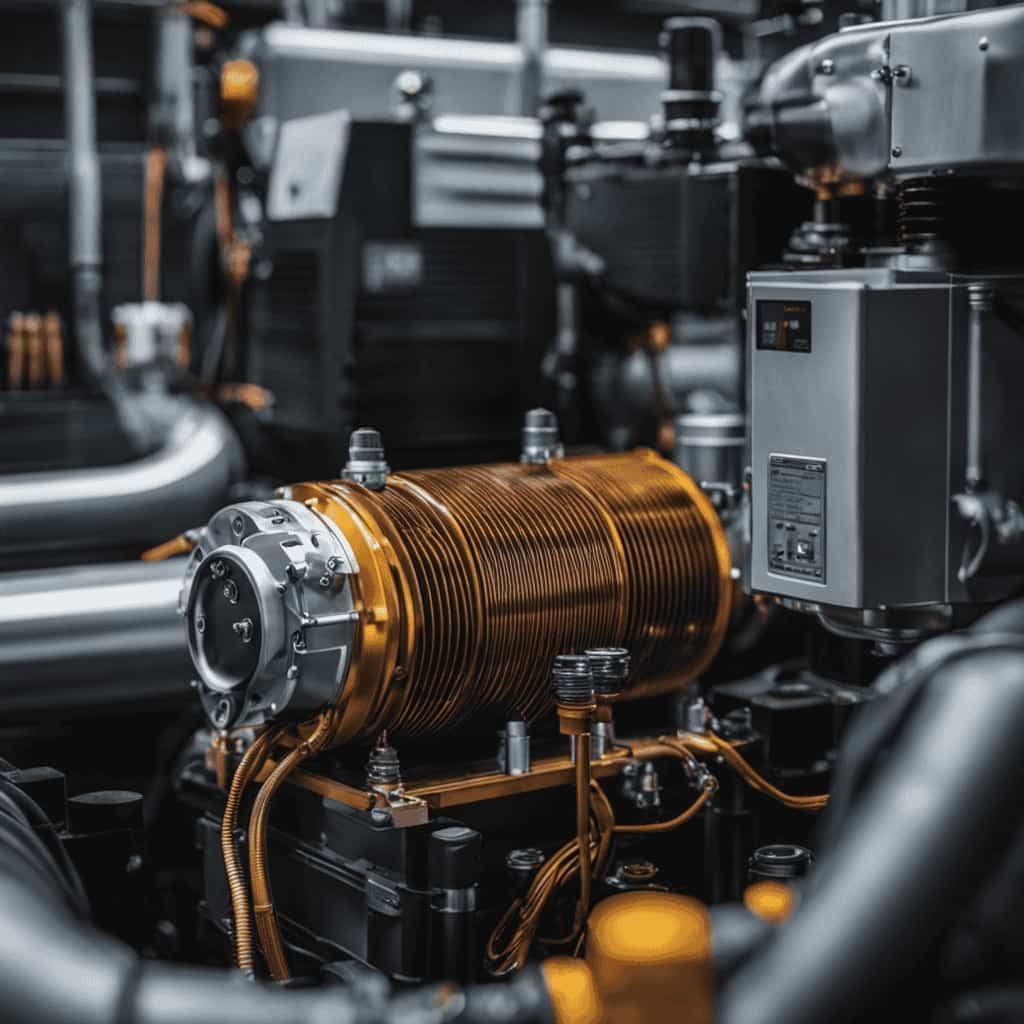Are you tired of high energy bills and inefficient heating and cooling systems?
We’ve got you covered with 8 essential strategies for maximizing heat pump energy efficiency.
From understanding efficiency ratings to utilizing programmable thermostats, insulating your home to supplementing with solar energy, we’ve got the tips and tricks you need to save money and stay comfortable.
Don’t miss out on the opportunity to lower your energy usage and take advantage of rebates and incentives.
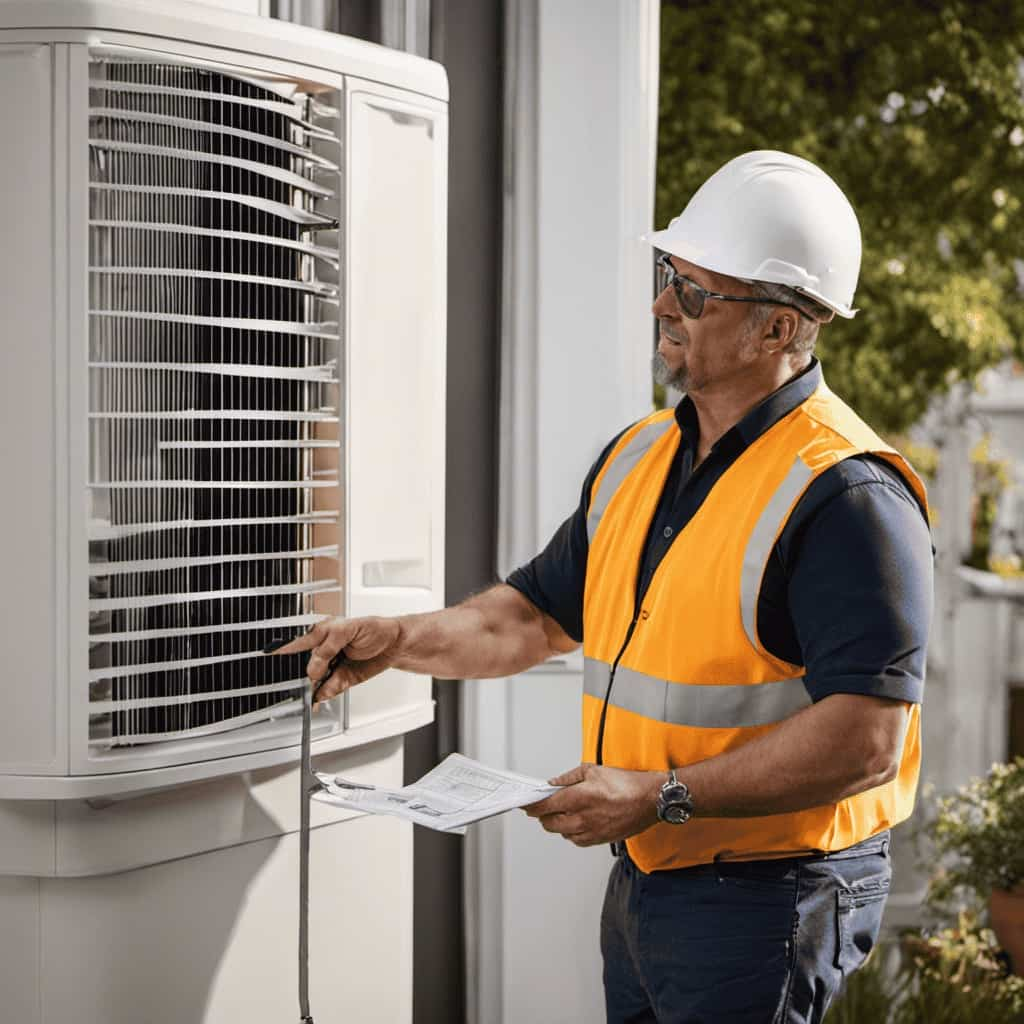
Let’s start maximizing efficiency today!
Key Takeaways
- Understanding heat pump efficiency ratings (SEER and HSPF) helps in selecting an energy-efficient heat pump.
- Proper sizing and installation techniques ensure optimal efficiency and prevent energy wastage.
- Regular maintenance and cleaning of the heat pump extend its lifespan and prevent unnecessary energy consumption.
- Utilizing programmable thermostats, insulating and sealing the home, and supplementing with solar energy are effective strategies for maximizing heat pump energy efficiency.
Understanding Heat Pump Efficiency Ratings
We’ll explore the different heat pump efficiency ratings to help you understand their significance in maximizing energy efficiency.
When it comes to heat pump efficiency factors, two important ratings to consider are SEER (Seasonal Energy Efficiency Ratio) and HSPF (Heating Seasonal Performance Factor).
SEER measures the cooling efficiency of a heat pump, indicating how much cooling output it can produce per unit of energy input. The higher the SEER rating, the more energy efficient the heat pump is.
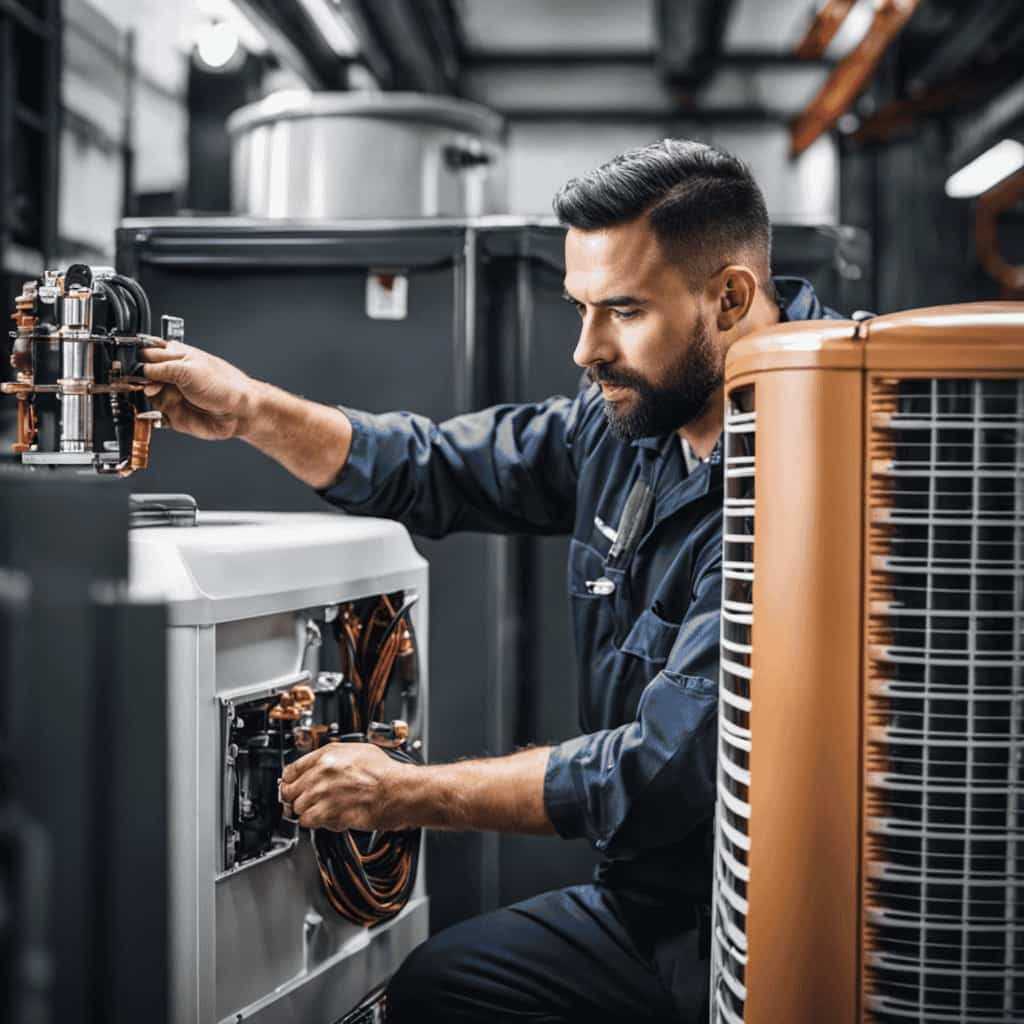
HSPF, on the other hand, measures the heating efficiency of a heat pump, showing how much heating output it can produce per unit of energy input. Similarly, a higher HSPF rating signifies a more energy efficient heat pump.
Understanding these ratings is crucial in selecting a heat pump that will provide optimal energy efficiency and help you save on utility costs.
Proper Sizing and Installation Techniques
When it comes to maximizing heat pump energy efficiency, proper sizing and installation techniques play a crucial role.
Sizing the heat pump correctly ensures optimal efficiency, as an oversized or undersized unit can lead to energy wastage.
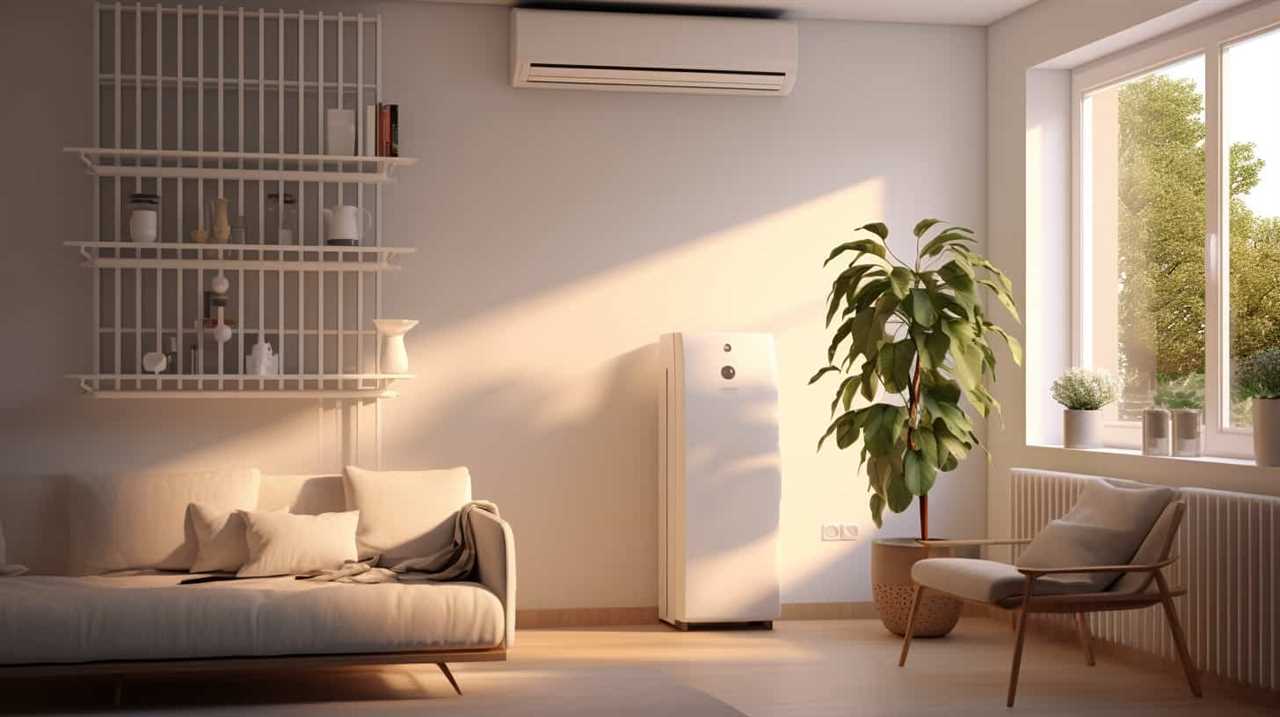
Additionally, correct installation techniques, such as proper ductwork and insulation, ensure that the heat pump operates efficiently and effectively.
Sizing for Optimal Efficiency
To ensure optimal efficiency, it’s crucial that we properly size and install the heat pump. Heat pump sizing plays a significant role in determining its energy consumption and overall performance. Oversized heat pumps can lead to frequent cycling, resulting in increased energy usage and wear and tear on the system.
On the other hand, undersized heat pumps may struggle to meet the heating or cooling demands of the space, leading to decreased comfort levels and inefficient operation. Therefore, it’s essential to accurately calculate the heating and cooling load of the space and select a heat pump that matches those requirements. This won’t only maximize energy efficiency but also ensure that the system operates at its peak performance.
With proper sizing and installation techniques, the heat pump can deliver optimal efficiency and comfort in the most energy-efficient manner.
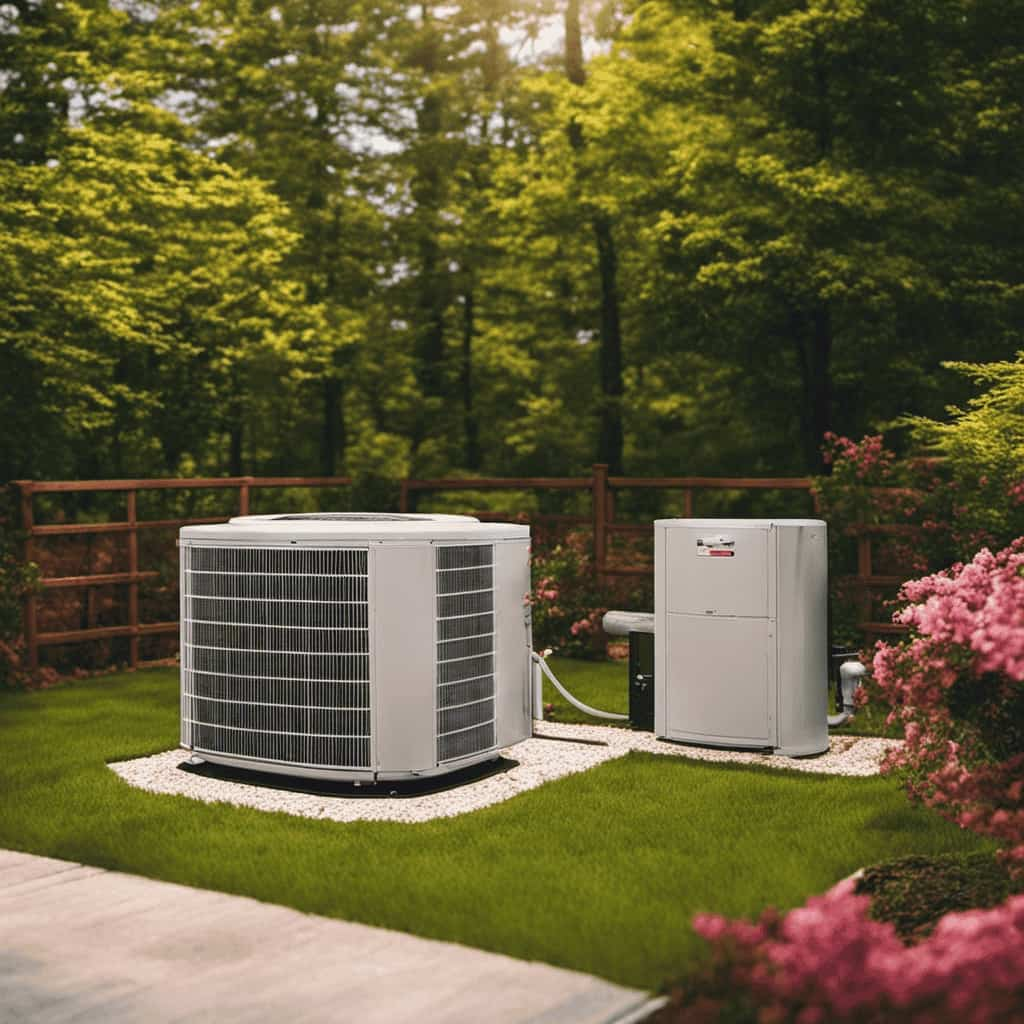
Correct Installation Ensures Efficiency
Proper installation techniques and accurate sizing are essential for maximizing the efficiency of your heat pump. When it comes to installation, there are a few key factors to consider. First, make sure to choose the right size heat pump for your space. An undersized heat pump will struggle to meet your heating and cooling needs, while an oversized one will cycle on and off frequently, wasting energy. Additionally, proper airflow is crucial for optimal performance. Ensure that the ductwork is properly sized and sealed to prevent air leaks. Lastly, the location of the heat pump is important. It should be placed in a shaded area away from direct sunlight and other heat sources. By following these energy-saving techniques during installation, you can maximize the performance of your heat pump and enjoy greater energy efficiency.
| Considerations for Correct Installation | ||
|---|---|---|
| Choose the right size heat pump | Ensure proper airflow | Optimal location |
| An undersized heat pump won’t meet your needs | Proper ductwork sizing and sealing prevents energy loss | Place heat pump in a shaded area |
| An oversized heat pump wastes energy | Avoid air leaks for optimal performance | Keep away from direct sunlight and heat sources |
Techniques for Proper Installation
Our main concern is ensuring the efficiency of your heat pump, so accurate sizing and precise installation techniques are essential.
Proper sizing is crucial to ensure that your heat pump isn’t too small or too large for your home, as this can lead to inefficiency and increased energy consumption. A professional HVAC technician can determine the appropriate size based on factors such as the square footage of your home, insulation levels, and climate conditions.
Precise installation techniques are also important to optimize the performance of your heat pump. This includes proper placement of the outdoor unit, correct installation of ductwork, and careful attention to electrical connections.

Additionally, proper maintenance and regular servicing are key to keeping your heat pump operating efficiently. Simple energy-saving tips like regularly cleaning or replacing air filters, keeping outdoor units clear of debris, and scheduling professional inspections can help maximize energy efficiency and prolong the lifespan of your heat pump.
Regular Maintenance and Cleaning
We should schedule routine maintenance and cleaning for our heat pump to ensure optimal performance and energy efficiency. Regular maintenance not only extends the lifespan of the heat pump but also helps prevent any potential issues that may arise.
Here are some cleaning techniques to keep in mind:
- Clean or replace the air filters regularly to ensure proper airflow and prevent dust buildup.
- Clear any debris or obstructions around the outdoor unit to allow for efficient heat transfer.
- Check and clean the coils to remove any dirt or debris that may hinder heat exchange.
By following these cleaning techniques, we can maintain the efficiency of our heat pump and avoid unnecessary energy consumption.
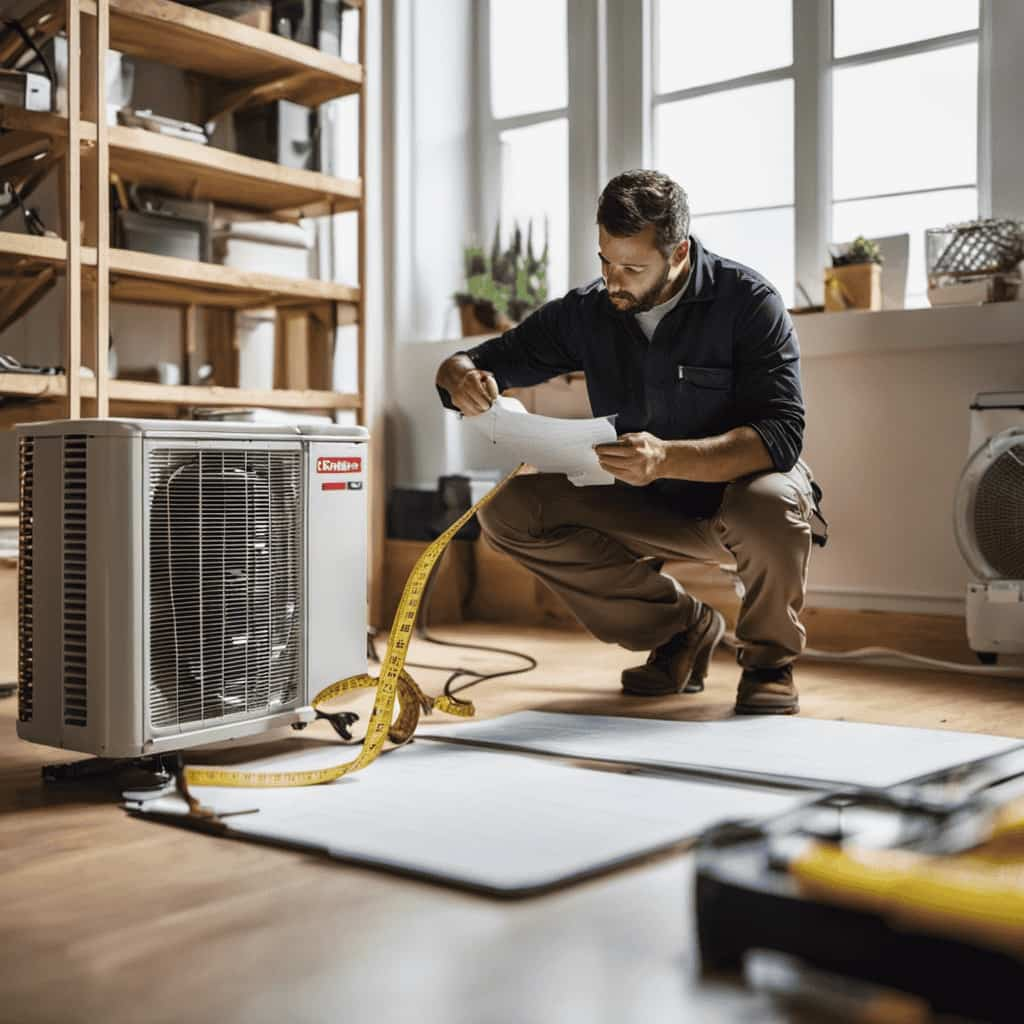
Utilizing Programmable Thermostats
To maximize energy efficiency, we can utilize programmable thermostats and optimize our heat pump’s temperature settings.
Programmable thermostats offer energy-saving features and remote access, allowing us to control our heat pump’s settings from anywhere. These thermostats allow us to create pre-set schedules, so we can adjust the temperature based on our daily routine. For example, we can set the thermostat to lower the temperature while we’re away and raise it before we return home. This way, we can ensure that our heat pump isn’t working unnecessarily and is only operating when needed.
By taking advantage of the energy-saving features and remote access capabilities of programmable thermostats, we can significantly reduce our energy consumption and save money on our heating bills.
Now, let’s explore how we can further optimize our heat pump settings for even greater efficiency.

Optimizing Heat Pump Settings for Efficiency
When optimizing heat pump settings for efficiency, it’s important to consider the specific needs of our home and climate. By following these energy-saving tips and performing regular heat pump maintenance, we can maximize the efficiency of our heating and cooling system:
-
Set the thermostat to the appropriate temperature: Adjusting the thermostat to a slightly lower temperature in winter and a slightly higher temperature in summer can significantly reduce energy consumption.
-
Utilize programmable thermostat features: Programming the thermostat to adjust temperatures based on our schedule ensures that we aren’t wasting energy when we’re away from home.
-
Use the ‘auto’ fan setting: Keeping the fan on the ‘auto’ setting allows the heat pump to operate more efficiently by only running the fan when needed.
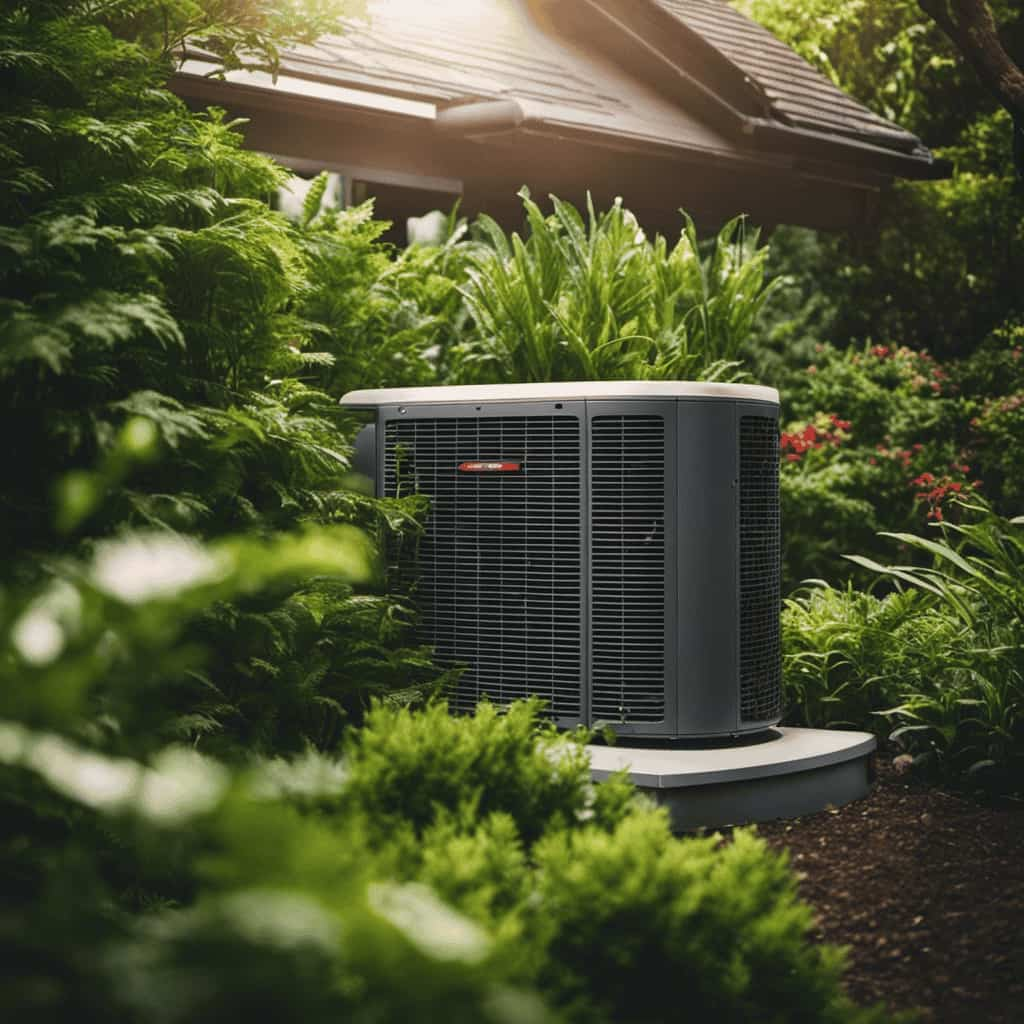
Insulating and Sealing Your Home
Properly insulating and sealing our home is essential for maximizing heat pump energy efficiency. By reducing air leakage and improving insulation, we can minimize heat transfer and maintain a comfortable indoor temperature without relying solely on our heat pump.
One of the key areas to focus on is sealing any gaps or cracks where air might escape or enter our home. This can be done using weatherstripping or caulking. Additionally, we should pay attention to insulation materials, such as fiberglass or cellulose, which can be added to walls, attics, and floors to further enhance energy efficiency.
By taking these steps, we can create a more airtight and well-insulated home, allowing our heat pump to work more efficiently and effectively.
Transitioning into the next section, another way to maximize energy efficiency is by supplementing with solar energy.

Supplementing With Solar Energy
Let’s talk about the benefits of supplementing heat pump energy with solar energy.
Solar panels can provide significant savings on energy costs and contribute to energy independence.
Solar Panels for Savings
We can maximize our energy efficiency by installing solar panels to supplement our heat pump system with solar energy. Solar panel installation offers several financial benefits, making it a smart choice for those looking to save money while reducing their carbon footprint.
Here are some key advantages of incorporating solar panels into your heat pump system:
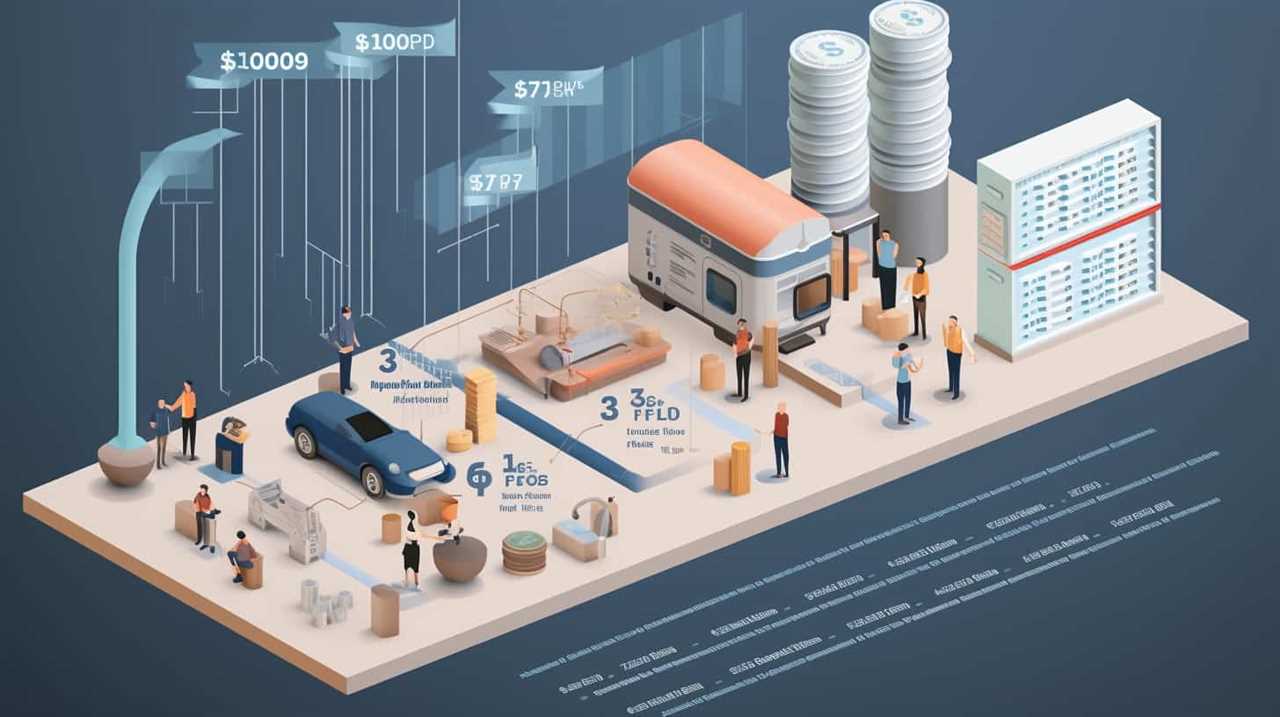
-
Reduced energy bills: By harnessing the power of the sun, you can generate your own electricity and reduce your reliance on the grid, resulting in lower monthly energy bills.
-
Government incentives: Many governments offer incentives and tax credits for installing solar panels, making the initial investment more affordable and providing long-term financial benefits.
-
Increased property value: Solar panels can increase the value of your property, making it a wise investment that pays off in the long run.
Energy Independence With Solar
Our energy independence can be achieved by supplementing our heat pump system with solar energy. By harnessing the power of the sun, we can reduce our reliance on the grid and take control of our energy consumption. Solar panels not only provide clean and renewable energy, but they also offer long-term cost savings. To maximize the benefits of solar energy, it is important to consider energy storage and grid integration. By storing excess energy generated during the day, we can use it during the night or when the sun is not shining. Additionally, grid integration allows us to sell any surplus energy back to the grid, further enhancing our energy independence.
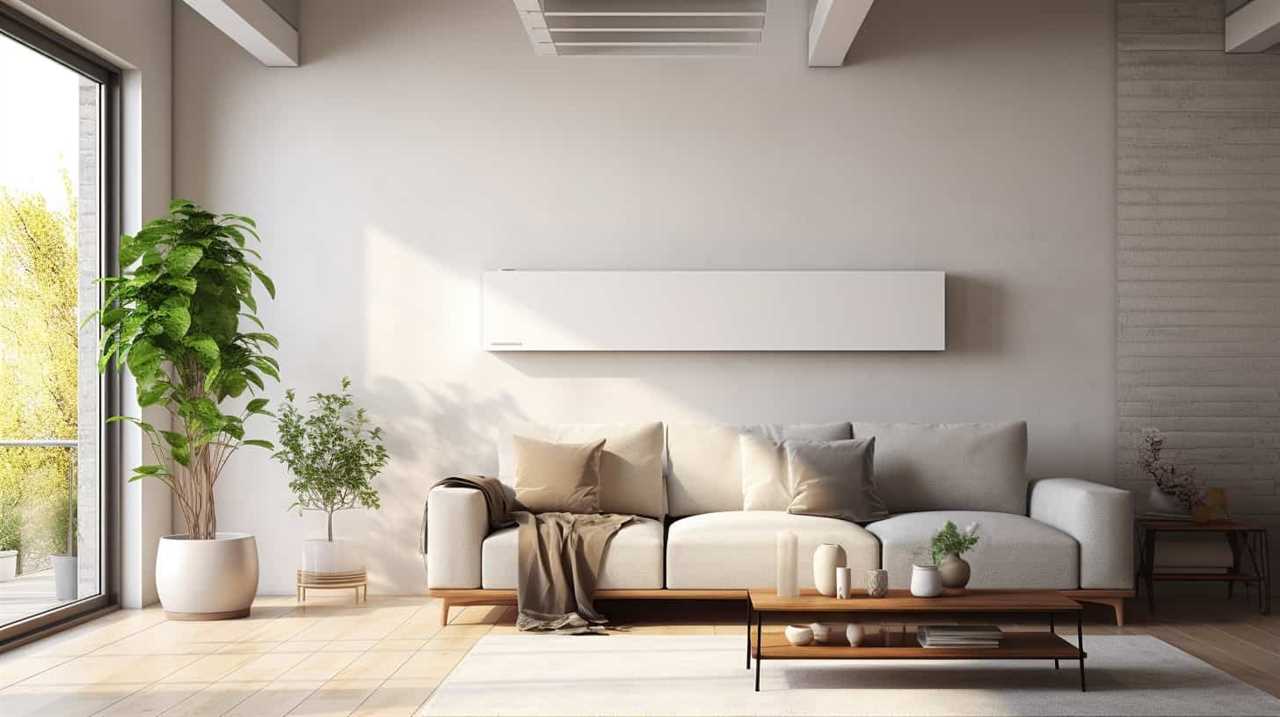
Here is a table illustrating the advantages of energy storage and grid integration:
| Advantages of Energy Storage | Advantages of Grid Integration |
|---|---|
| – Allows for energy independence | – Ability to sell surplus energy back to the grid |
| – Provides backup power during grid outages | – Ensures a reliable energy supply |
| – Reduces strain on the grid during peak demand | – Supports the growth of renewable energy |
| – Enables time shifting of energy use | – Allows for better management of energy consumption |
Taking Advantage of Rebates and Incentives
By leveraging available rebates and incentives, we can significantly increase the energy efficiency of our heat pump system. Taking advantage of rebate eligibility and incentive programs not only helps us save money but also promotes a more sustainable lifestyle.
Here are three ways we can make the most of these opportunities:
-
Research and apply for rebate programs offered by local utility companies or government agencies. These programs often provide financial incentives for upgrading to energy-efficient heat pump systems.
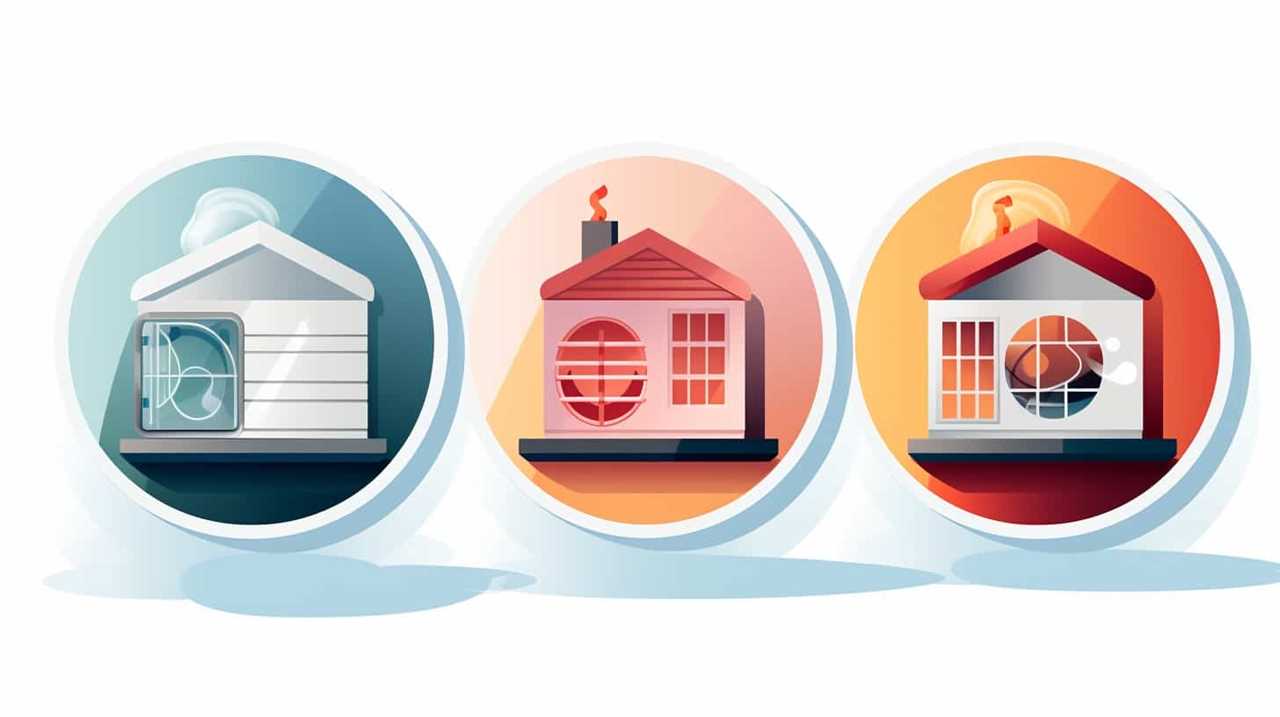
-
Look for manufacturer rebates that may be available for specific heat pump models. These rebates can help offset the initial cost of purchasing and installing a new system.
-
Consider participating in demand response programs. These programs reward homeowners for reducing their energy usage during peak demand periods, which can help lower energy bills and reduce strain on the electrical grid.
Frequently Asked Questions
What Are the Different Types of Heat Pump Efficiency Ratings and How Do They Impact Energy Savings?
Heat pump efficiency ratings and their impact on energy savings depend on the different types. Understanding these ratings is essential for maximizing efficiency and saving energy with heat pumps.
How Can I Determine the Appropriate Size for a Heat Pump for My Home?
To determine the appropriate size for a heat pump, we need to consider the size of your home, insulation, and climate. A professional can calculate the heat pump capacity needed for optimal efficiency.
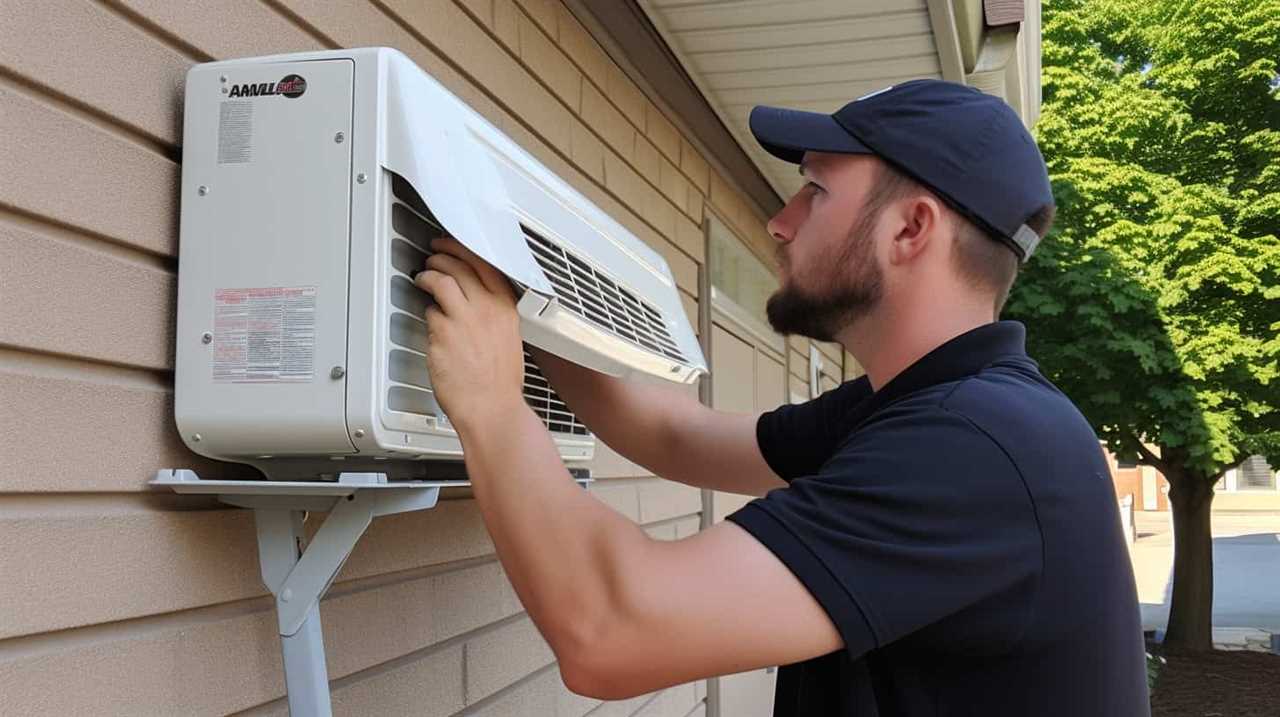
What Are Some Common Maintenance Tasks I Should Perform Regularly to Ensure Optimal Heat Pump Efficiency?
Regular maintenance tasks are essential for optimal heat pump efficiency. We should clean or replace air filters, check and clean coils, inspect ducts for leaks, and schedule professional tune-ups to ensure peak performance.
Are There Any Specific Programming Tips for Maximizing Energy Efficiency With a Programmable Thermostat and a Heat Pump?
To maximize energy efficiency with a programmable thermostat and a heat pump, we can employ various programming techniques and energy-saving strategies. By utilizing these methods, we can optimize our heating and cooling system while saving on energy costs.
What Are Some Effective Ways to Insulate and Seal My Home to Improve Heat Pump Efficiency?
To improve heat pump efficiency, we’ve found that insulating and sealing your home are essential. Insulation benefits by reducing heat loss, while sealing techniques minimize air leaks, ensuring maximum energy savings.
Conclusion
As we wrap up our journey into maximizing heat pump energy efficiency, let’s remember that our homes aren’t just structures, but sanctuaries where comfort and sustainability coexist.

By implementing these essential strategies, we unlock the potential of our heat pumps to not only save energy but also protect the environment.
Let’s embrace the power of efficiency and create a warm, efficient haven that symbolizes our commitment to a greener future.





